
fishing guide gratuity
1.1 Overview of Fishing Guide Gratuity
Fishing guide gratuity is a customary practice expressing appreciation for guides’ expertise, effort, and service during excursions. It is a key aspect of the fishing experience.
Fishing guide gratuity is a customary practice in the fishing industry, reflecting appreciation for guides’ expertise, effort, and service during excursions. Generally, tips range between 15% to 20% of the trip’s total cost, depending on service quality and duration. For instance, a full-day trip might warrant a tip of $100 per guide or more, while shorter trips may align with a percentage-based approach. This practice ensures fair compensation for guides, often relying on tips as part of their income. It also fosters a positive relationship between anglers and guides, enhancing the overall fishing experience. Understanding gratuity norms is essential for both first-time and seasoned anglers.
1.2 Importance of Tipping in the Fishing Industry
Tipping is a vital aspect of the fishing industry, as it directly impacts the livelihood of fishing guides. Guides often rely on gratuity as a significant portion of their income, as their base wages may be minimal. A tip reflects satisfaction with the guide’s expertise, effort, and overall service quality. It also incentivizes guides to provide exceptional experiences, ensuring anglers enjoy memorable and productive trips. Additionally, tipping customs vary based on trip duration, location, and service standards. Understanding the importance of tipping fosters a positive relationship between anglers and guides, contributing to a thriving fishing community. It is a cornerstone of fishing etiquette and appreciation.
Understanding Tipping Culture in Fishing Excursions
Tipping culture in fishing excursions varies by location and service quality. Standard gratuity ranges between 15-20% of the trip cost, reflecting regional norms and angler satisfaction.
2.1 What Tipping Represents in the Fishing Industry
Tipping in the fishing industry is a cornerstone of etiquette, reflecting appreciation for guides’ expertise, effort, and personalized service. It acknowledges their dedication to ensuring a successful and enjoyable experience. Gratuities often make up a significant portion of a guide’s income, emphasizing the importance of fair compensation for their work. Additionally, tipping serves as a way to recognize the guide’s knowledge of fishing spots, techniques, and safety measures, which enhance the overall adventure. Regional customs influence tipping norms, with variations in expectations across different areas, further highlighting its cultural significance in the fishing community.
2.2 The Role of Gratuity in Supporting Fishing Guides
Gratuity plays a vital role in supporting fishing guides, as it often constitutes a significant portion of their income. Many guides rely on tips to supplement their base pay, which can be modest. By providing fair gratuity, clients directly contribute to the guide’s livelihood, acknowledging their hard work and dedication. Additionally, tips incentivize guides to deliver exceptional service, ensuring memorable experiences for anglers. This financial support also enables guides to invest in equipment, training, and maintaining high-quality excursions. Thus, gratuity is not just a gesture of appreciation but a crucial factor in sustaining the professionalism and quality of fishing guide services.

Factors Influencing Gratuity Amounts
Gratuity amounts for fishing guides are influenced by trip duration, guide expertise, and overall satisfaction. Longer trips and exceptional service typically warrant higher tips.
3.1 Duration and Type of Fishing Trip
The length and type of fishing trip significantly influence gratuity amounts. Full-day excursions typically warrant higher tips compared to half-day trips, as guides invest more time and effort. For example, a half-day trip might see tips ranging from $20 to $50 per person, while a full-day trip could range from $50 to $100 or more per person. Multi-day charters often involve higher gratuity, reflecting the extended service and dedication of the guide. Additionally, the type of fishing—such as deep-sea, freshwater, or fly fishing—can impact expectations, as some specialties require greater expertise. Overall, trip duration and complexity remain key factors in determining appropriate gratuity.
3.2 Guide Expertise and Service Quality
A fishing guide’s expertise and the quality of service are crucial in determining gratuity. Skilled guides who consistently locate prime fishing spots, provide expert techniques, and ensure safety often receive higher tips. Exceptional service, such as offering personalized instruction or handling equipment, enhances the experience and warrants increased generosity. Conversely, if the guide appears disengaged or unprepared, tipping may reflect dissatisfaction. The level of professionalism, knowledge, and attentiveness directly impacts how much anglers choose to give, making service quality a primary factor in gratuity decisions.
3;3 Overall Satisfaction with the Experience
Overall satisfaction with the fishing experience plays a significant role in determining gratuity. If anglers feel the trip exceeded expectations, they are more likely to leave a generous tip. Factors such as the number of fish caught, the guide’s ability to adapt to conditions, and the overall enjoyment of the day influence satisfaction. A positive atmosphere, clear communication, and a guide’s willingness to go above and beyond also enhance the experience. Conversely, unmet expectations or dissatisfaction may result in a smaller tip. Ultimately, gratuity reflects how well the guide contributed to an enjoyable and memorable outing, making overall satisfaction a key factor in tipping decisions.
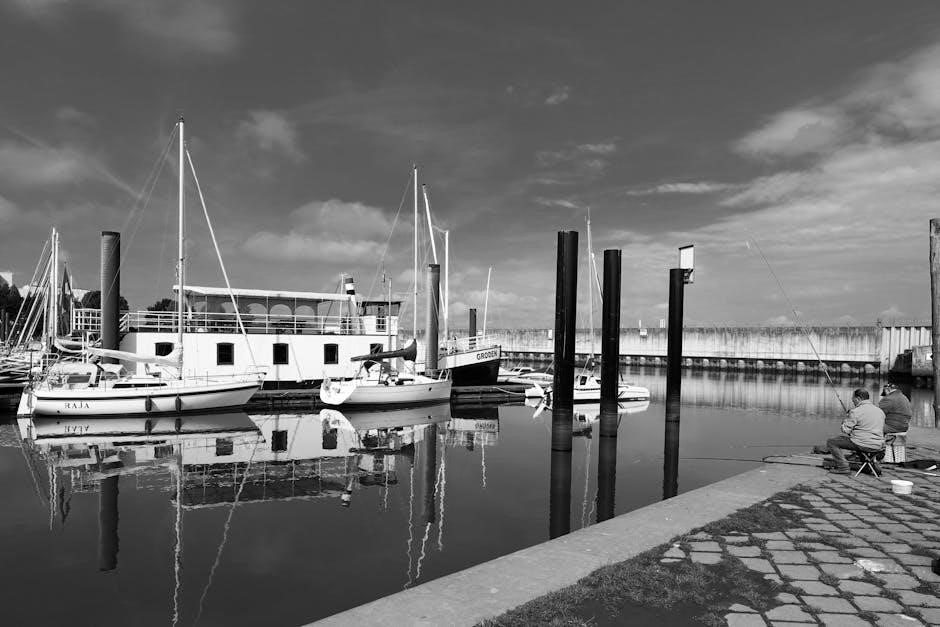
Standard Tipping Rates for Fishing Guides
Standard tipping rates for fishing guides typically range between 15% to 20% of the trip’s total cost, commonly expected in North America and similar regions.
4.1 General Guidelines for Tipping Percentages
Typically, tipping percentages for fishing guides range between 15% to 20% of the total trip cost. For a full-day excursion, 20% is considered standard, especially for exceptional service. This percentage applies regardless of the number of anglers, as it reflects the guide’s overall effort. Some recommend tipping 10% of the trip cost or $100 per day, whichever is higher. These guidelines ensure fair compensation for guides, who often rely on tips as part of their income. Always consider the quality of service and adjust accordingly to reflect your satisfaction with the experience.
4.2 Per Person vs. Per Group Tipping Practices
Tipping practices vary between per person and per group structures. For smaller groups, a flat rate per group is common, simplifying the process. For larger groups, tipping per person ensures fairness, as each individual contributes to the total; Some recommend $20 per person, while others suggest a flat rate of $100 per day, regardless of group size. The key is to ensure the total tip reflects the quality of service and the guide’s effort. Both methods are acceptable, but per person tipping may be more equitable in larger groups. Ultimately, the approach should align with the group’s preferences and the guide’s expectations.
When to Adjust Gratuity
Gratuity should be adjusted based on service quality. Exceptional efforts warrant higher tips, while subpar experiences may justify a lower amount, reflecting the guide’s performance accurately.
5.1 Exceptional Service Worthy of a Higher Tip
Exceptional service from a fishing guide often warrants a higher gratuity. If the guide demonstrates extensive knowledge, goes above and beyond expectations, or ensures a memorable experience, consider increasing the tip. For instance, if the guide consistently puts you on fish, provides expert instruction, or handles challenging conditions with professionalism, a higher tip reflects their outstanding effort and dedication.
Many anglers opt to tip 25% or more of the trip cost for exceptional service. This gesture acknowledges the guide’s hard work and enhances the overall positivity of the experience for both parties. Higher tips are particularly appropriate when the guide exceeds expectations in terms of service quality, expertise, or personalized attention.
5.2 Situations Where a Lower Tip May Be Appropriate

A lower tip may be appropriate if the guide’s service falls short of expectations. For example, if the guide appears unprepared, lacks knowledge of the fishing area, or fails to provide meaningful instruction, a reduced gratuity is justified. Additionally, if the guide’s attitude is disrespectful or unprofessional, it may warrant a smaller tip. However, it’s important to communicate concerns directly with the guide or charter operator before adjusting the gratuity, as this can often resolve issues amicably. A lower tip should still be fair and reflective of the service received, ensuring it aligns with the overall quality of the experience.
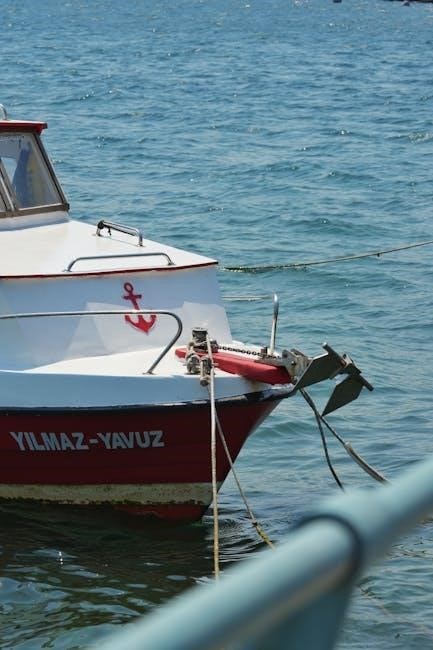
How to Properly Deliver Gratuity
Gratuity can be delivered as cash, credit card, or split among multiple guides. Ensure clarity on how tips are distributed, especially for multi-crew excursions, to avoid misunderstandings.
6.1 Cash vs. Credit Card Tips for Guides

When deciding how to deliver gratuity, cash remains the preferred method for fishing guides, as it ensures they receive the full amount immediately. Credit card tips are also accepted by some guides, especially in organized tours, but may incur processing fees. For multi-day trips or large groups, credit card tips can be more convenient. However, cash is often easier for guides to split among crew members. Ultimately, check with the guide or charter service beforehand to confirm their preference. Regardless of the method, ensure the tip reflects the quality of service received and adheres to established norms for fishing excursions.
6.2 Tipping Etiquette for Multiple Guides or Crew Members
When multiple guides or crew members are involved, it’s important to ensure fair distribution of gratuity. For group trips, pooling tips and giving them to the lead guide or captain is common, as they often split it among the team. Alternatively, tipping each crew member individually is acceptable if preferred. Always clarify with the charter or guide service beforehand to understand their tipping policies. Some operations may include gratuity in the total cost, so check the booking details to avoid double-tipping. Ensuring that each crew member receives a fair share reflects appreciation for their collective effort in making the fishing experience enjoyable and successful.
Regional Variations in Tipping Norms
Tipping customs vary globally, with North America typically seeing 15-20% gratuity, while Central or South America may expect $50-$100 per day. Affluent regions often tip higher.
7.1 Tipping Customs in North America
In North America, tipping fishing guides is deeply rooted in culture, with standards varying slightly by region. Generally, a tip of 15% to 20% of the trip’s total cost is considered standard. This applies across the U.S. and Canada, including popular fishing destinations like Alaska and Hawaii. Some anglers prefer to tip per guide rather than per person, ensuring fair compensation for the crew’s efforts. Tipping customs are consistent nationwide, reflecting appreciation for the guide’s expertise and service quality. This practice is well-established, making it a expected part of the fishing experience in North America.
7.2 Tipping Practices in International Waters
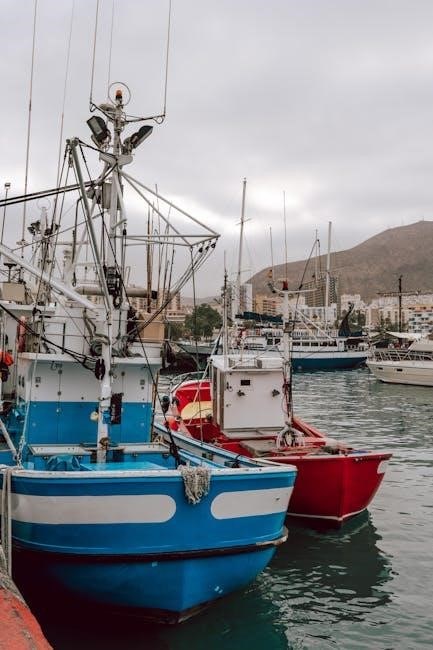
Tipping practices in international waters vary significantly depending on the region and local customs. In Central or South America, a daily tip of $50 to $100 per guide is often appropriate, reflecting local economic standards. In contrast, wealthier regions may expect higher gratuities, up to $100 daily. Additionally, rounding up the bill or adding a modest percentage is customary in countries like Italy or Australia. These practices ensure fair compensation for guides and crew, acknowledging their expertise and service. International tipping norms are diverse, requiring travelers to research local customs before their fishing excursions to ensure appropriate gratitude.
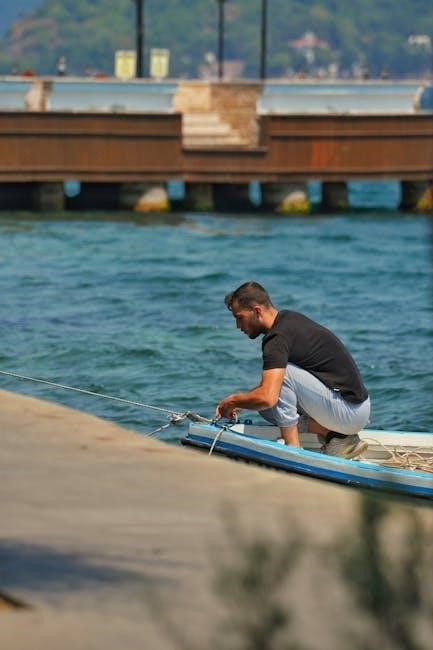
Special Considerations for Tipping
Additional services like cleaning and filleting may require extra tips. Multi-day trips or lodge stays often involve separate gratuities for guides, staff, and crew members.
8.1 Tipping for Additional Services (Cleaning, Filleting)
Tipping for additional services like cleaning and filleting is a thoughtful way to acknowledge extra efforts. These tasks often go beyond standard guiding duties, requiring skill and time. A tip of $5 to $15 per person for cleaning, depending on group size, is considered appropriate. If the guide also fillets the catch, adding $10 to $20 per person is fair. These tips can be included in the overall gratuity or given separately. Cash or credit tips are common, while some anglers offer gear or tackle as a gesture of appreciation. Recognizing these extra services ensures guides feel valued for their hard work.
8.2 Gratuities for Lodges or Multi-Day Trips
For multi-day fishing trips or stays at lodges, tipping practices vary but generally involve higher gratuities. These tips often cover both guiding services and lodging staff. A common recommendation is to tip 15% to 20% of the total trip cost, which includes both the guide and lodge staff. Some anglers prefer to tip individually based on service quality. Cash tips are often preferred, as they can be easily distributed among staff. For multi-day excursions, consider budgeting an additional $50 to $100 per day for lodge staff, depending on the level of service and amenities provided. This ensures all support staff feel appreciated for their efforts.
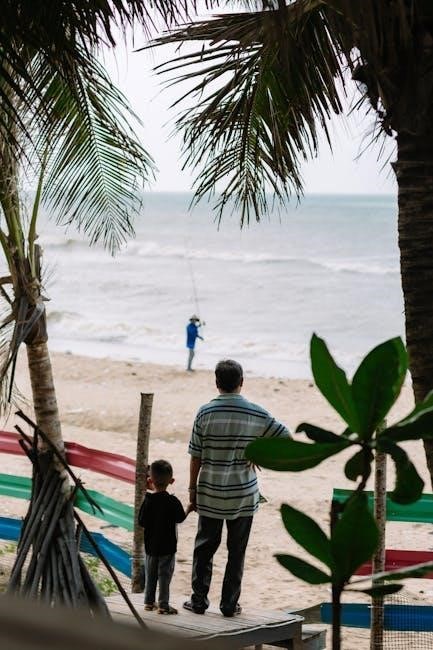
Best Practices for Determining Gratuity
Consider service quality, trip duration, and total cost when determining gratuity. Budgeting 15-20% of the trip cost is a common practice. Communicate expectations with guides beforehand.
9.1 Budgeting for Tips Before the Trip
Budgeting for gratuity is essential to ensure a smooth experience. Calculate 15-20% of the trip cost for tips, as this range is standard. For multi-day trips, consider budgeting $100-$150 per day per guide. Including tips in your initial budget prevents financial stress later. Research regional tipping norms to adjust amounts accordingly. Plan for cash tips, as they are often preferred. Consider additional services like fish cleaning, which may warrant extra gratuity. Budgeting ahead shows respect for the guide’s effort and ensures a positive experience for both parties. Plan generously to reflect the quality of service received during your fishing excursion.
9.2 Communicating with Guides About Tipping Expectations
Clear communication with guides about tipping expectations ensures a respectful and transparent experience. Before the trip, consider discussing tipping norms to align expectations. Ask the guide or operator about standard gratuity ranges, such as 15-20% of the trip cost. This avoids awkwardness and ensures fairness. Some guides may prefer cash tips, while others accept credit cards, so clarify payment methods in advance. Open dialogue shows appreciation for their work and helps build a positive relationship. By communicating early, you ensure your gratuity reflects the quality of service received and supports the guide’s livelihood. This approach fosters mutual respect and enhances the overall experience.
Common Mistakes to Avoid When Tipping
Common mistakes include underestimating gratuity’s importance and failing to base tips on service quality, potentially undervaluing guides’ efforts and expertise.
10.1 Underestimating the Importance of Gratuity
Underestimating the importance of gratuity can lead to unintended consequences, such as undervaluing the guide’s effort and potentially affecting the quality of service. Many guides rely heavily on tips, as their income may be largely tip-based. Ignoring or minimizing gratuity can create a negative experience for both parties. It is essential to recognize that tipping reflects satisfaction and supports the guide’s livelihood. Standard tipping rates, typically 15-20% of the trip cost, are widely accepted. Dismissing these norms can harm the fishing community and discourage guides from providing exceptional service. Always consider the impact of gratuity on the overall experience and the guide’s profession.

10.2 Overlooking Service Quality When Deciding Tips
Overlooking service quality when deciding tips is a common mistake that can undervalue a guide’s effort and expertise. Tipping should reflect the guide’s performance, including their knowledge, patience, and ability to enhance the experience. Ignoring these factors may result in unfair compensation, as guides often rely on tips to supplement their income. Poor service, such as lack of effort or unprofessional behavior, warrants a lower tip, while exceptional service deserves recognition. Failing to consider service quality can lead to dissatisfaction for both parties and may discourage guides from providing outstanding experiences. Always assess the guide’s contribution to your trip before deciding on gratuity.
Fishing guide gratuity is a vital expression of appreciation for guides’ dedication and expertise. It ensures fair compensation and fosters positive experiences for both anglers and guides alike.
11.1 Final Thoughts on Tipping Fishing Guides
Tipping fishing guides is a thoughtful way to acknowledge their hard work and dedication. A standard tip of 15-20% of the trip cost is widely recommended, reflecting satisfaction with the guide’s expertise and service. For exceptional experiences, consider increasing the gratuity. Remember, tipping is personal and should align with the quality of service received. Whether on a solo trip or with a group, showing appreciation through a fair tip supports guides and enhances the fishing community. Always budget for gratuity beforehand to ensure a smooth and courteous experience for both you and your guide.
11.2 The Impact of Gratuity on the Fishing Community
Gratuity plays a vital role in supporting the fishing community, as it often accounts for a significant portion of guides’ income. Fair tipping incentivizes guides to provide exceptional service, fostering a positive experience for anglers. In regions where tipping norms vary, consistent gratuity helps maintain service quality and ensures guides can sustain their livelihoods. Additionally, tipping contributes to the local economy, benefiting related businesses. By showing appreciation through fair tips, anglers help preserve the fishing tradition and ensure the continued availability of skilled guides. Ultimately, gratuity strengthens the bond between anglers and the fishing community, creating a mutually beneficial relationship.

